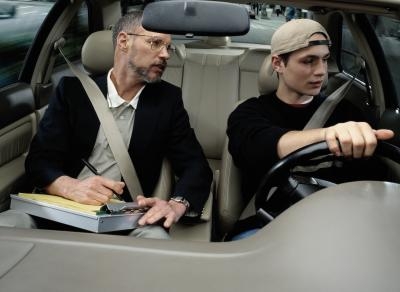
Being able to drive a car is only half the battle for earning your full driver's license. You have to be able to prove you can recognize hazards and acknowledge them quickly as they occur -- the purpose of the hazard perception aspect of your theory test. It's a computer program that requires you to click the mouse whenever you see a potential hazard, and there are a number of ways you can ensure success.
Purchase software that replicates the hazard perception test and allows you effectively to complete a version of the test before you experience the pressured situation of your theory exam. Programs include, but are not limited to, "Hazard Perception", "Driving Test Success: Hazard Perception 2011" and "The Official DSA Guide To Hazard Perception."
Ask your instructor, in the lead-up to your theory test, to incorporate aspects of hazard perception into your driving lessons. Your instructor may ask you to point out hazards as they occur during your drive; invaluable real-time experience of hazard perception, and the perfect preparation.
Look for common hazards that are often used in the hazard perception test. These include pedestrians or cyclists, concealed vehicles emerging from roads alongside you, meeting oncoming vehicles on narrow roads and animals wandering on to the road.
Ensure you click the mouse when the hazard has developed. If you spot a potential hazard before it develops, you could click before the clip enters the "scoring zone." You are awarded between one and five points -- depending on the swiftness of your click, from the point at which the computer decides the hazard has initiated -- so it's a good idea to click another once or twice as the hazard fully develops to ensure you have scored points for the clip.
Rest and relax ahead of your test. This is, effectively, a mental test, and the better your preparation the sharper your brain will be.